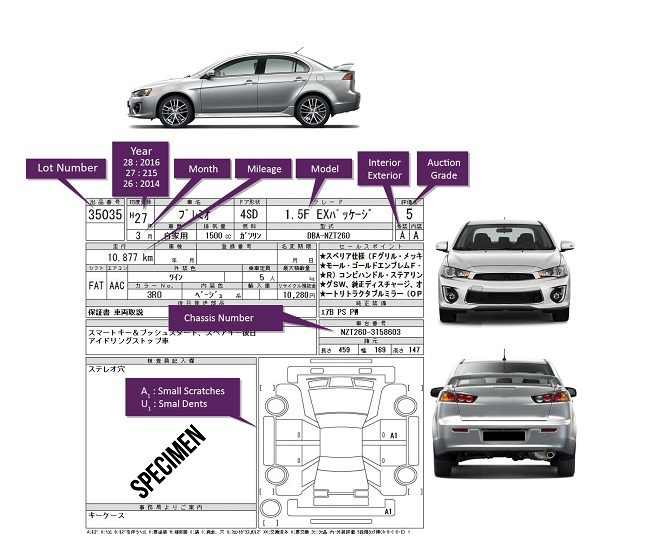Used vehicles: Tips to understand a car auction sheet

Looking forward to purchasing a secondhand Japanese vehicle? Not eager to get lost between paperwork and technical details? LexpressCars breaks down the Japanese car auction sheet to help you stay on top of your purchase to make the best choice.
What is a car auction sheet?
It is the proof that the used car has been professionally evaluated and graded by an inspector on a number of checkpoints before being exported or sold to agents. If you pay enough attention to it, it can reveal a lot about your future purchase to ease your decision-making.
Grading code:
In short 6 and A are the best you can get. Composed of one number from 0 – 6 and one or two letters in some cases from A-D, this indicates the overall condition of the vehicle (the additional letter is sometimes used to grade the body of the car).
Other codes:
S means that the car is brand new (like an “A”-graded one in some cases)
R means that the vehicle has been repaired
XX indicates a damaged car
Age of the vehicle:
The meaning of the grade always varies according to the age of the vehicle. A “C” will be the general standard expected of a 10-year-old car, but will be a bad sign for a 2 year-old
car for example.
Important sections:
Additional Features will indicate the transmission mode, as well as air cooling options with abbreviations such as “FAT” for Floor-Shift Automatic Transmission or “AAC” for Automatic Air Conditioning.
Additional Accessories:
They will indicate any further options and accessories in the vehicle, ranging anywhere from “PW” for Power Windows to “SR” for Sun Roof.
Do not neglect:
Any report of a car crash history, traces of rust, corrosion, or severe defect highlighted in the auction sheet.
Check the section of the report describing the inside of the car to make sure it would be a great buy.

